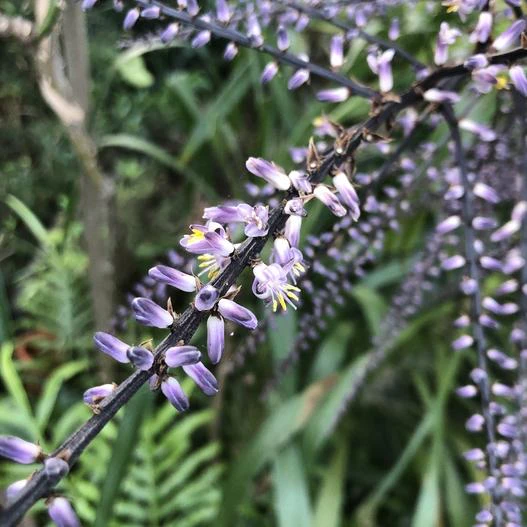Narrow-Leaf Palm-Lily
(Cordyline stricta)
Narrow-Leaf Palm-Lily (Cordyline stricta)
/
/

Jimbellofbelmont
CC BY-SA 4.0
Image By:
Jimbellofbelmont
Recorded By:
Copyright:
CC BY-SA 4.0
Copyright Notice:
Photo by: Jimbellofbelmont | License Type: CC BY-SA 4.0 | License URL: https://creativecommons.org/licenses/by-sa/4.0 | Uploader: Jimbellofbelmont | Publisher: Wikipedia Commons



























Estimated Native Range
Climate Requirements for London, Canada
| This Plant | Your Site | Plant Suitability for Your Location | ||
|---|---|---|---|---|
| • Precipitation | 13" - 359" | 40" | Aquatic | Aquatic |
| • High Temp. | 69°F - 100°F | 81°F | Your summer temperatures are normal for this plant. | Excellent |
| • Low Temp. | -24°F - 56°F | 15°F | Your winter temperatures are normal for this plant | Excellent |
This plant should grow well at your location with about N inches per year (Y minutes per month) of irrigation.
Summary
Cordyline stricta, commonly known as Narrow-Leaf Palm-Lily, is an evergreen shrub native to the understory of eastern Australian rainforests, including New South Wales and Queensland. It typically grows to a height of 5 meters. The plant features long, thin leaves that are 30 to 50 cm in length and 1 to 2 cm wide. During the flowering season, which occurs in summer, it produces mauve flowers on panicles that are 20 to 40 cm long, with a flowering stem of 15 to 30 cm. The flowers are followed by purple to black berries, 10 to 15 mm in diameter, which are attractive to birds.
Narrow-Leaf Palm-Lily is valued for its vertical form and the ornamental appeal of its foliage, flowers, and berries. It is often used as a screen plant in gardens and commercial landscapes. This species is adaptable to a range of conditions, from full sun to full shade, and is moderately drought tolerant once established, making it a versatile choice for gardeners. However, it is sensitive to frost, which can damage the plant. In cultivation, it thrives best with medium water requirements and in soils with medium drainage. While generally disease-free, it can occasionally suffer from root rot if overwatered or planted in poorly drained soils.CC BY-SA 4.0
Narrow-Leaf Palm-Lily is valued for its vertical form and the ornamental appeal of its foliage, flowers, and berries. It is often used as a screen plant in gardens and commercial landscapes. This species is adaptable to a range of conditions, from full sun to full shade, and is moderately drought tolerant once established, making it a versatile choice for gardeners. However, it is sensitive to frost, which can damage the plant. In cultivation, it thrives best with medium water requirements and in soils with medium drainage. While generally disease-free, it can occasionally suffer from root rot if overwatered or planted in poorly drained soils.CC BY-SA 4.0
Plant Description
- Plant Type: Shrub
- Height: 6-12 feet
- Width: 4-6 feet
- Growth Rate: Moderate
- Flower Color: Purple
- Flowering Season: Spring
- Leaf Retention: Evergreen
Growth Requirements
- Sun: Full Sun, Part Shade, Full Shade
- Water: Medium
- Drainage: Medium
Common Uses
Bee Garden, Bird Garden, Butterfly Garden, Drought Tolerant, Low Maintenance, Potted Plant, Salt Tolerant, Showy Flowers, Street Planting
Natural Habitat
Native to the understory of eastern Australian rainforests
Other Names
Common Names: Slender Palm Lily, Toppdracena
Scientific Names: Cordyline stricta, Dracaena congesta, Dracaena stricta, Charlwoodia stricta, Cordyline stricta var. discolor, Cordyline stricta var. grandis, Taetsia stricta, Terminalis stricta
GBIF Accepted Name: Cordyline stricta (Sims) Endl.